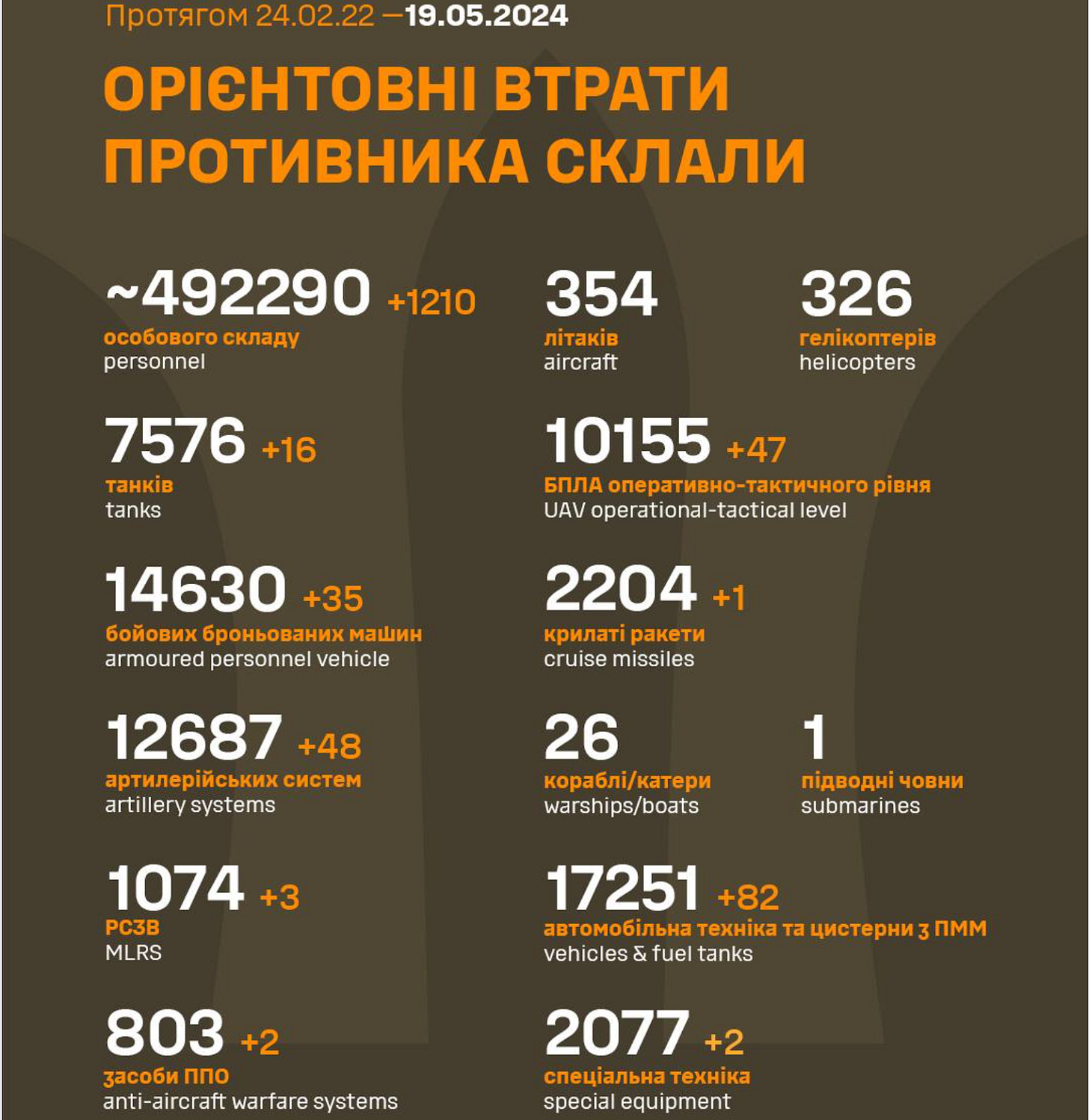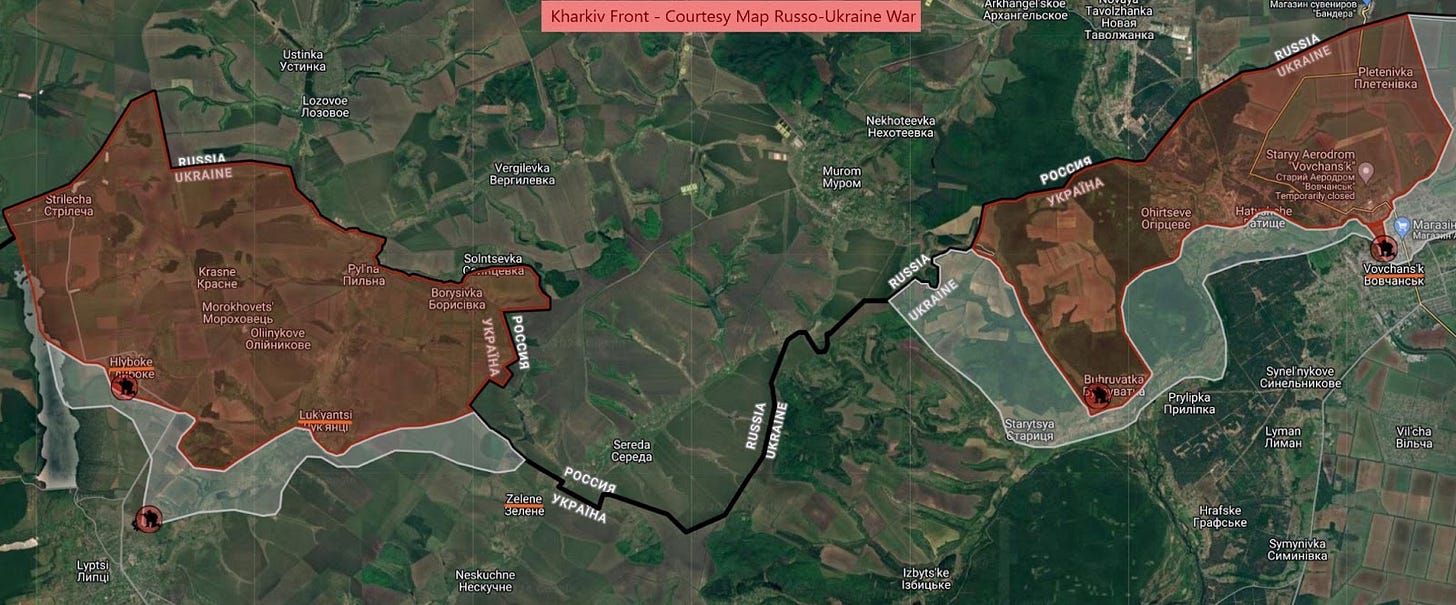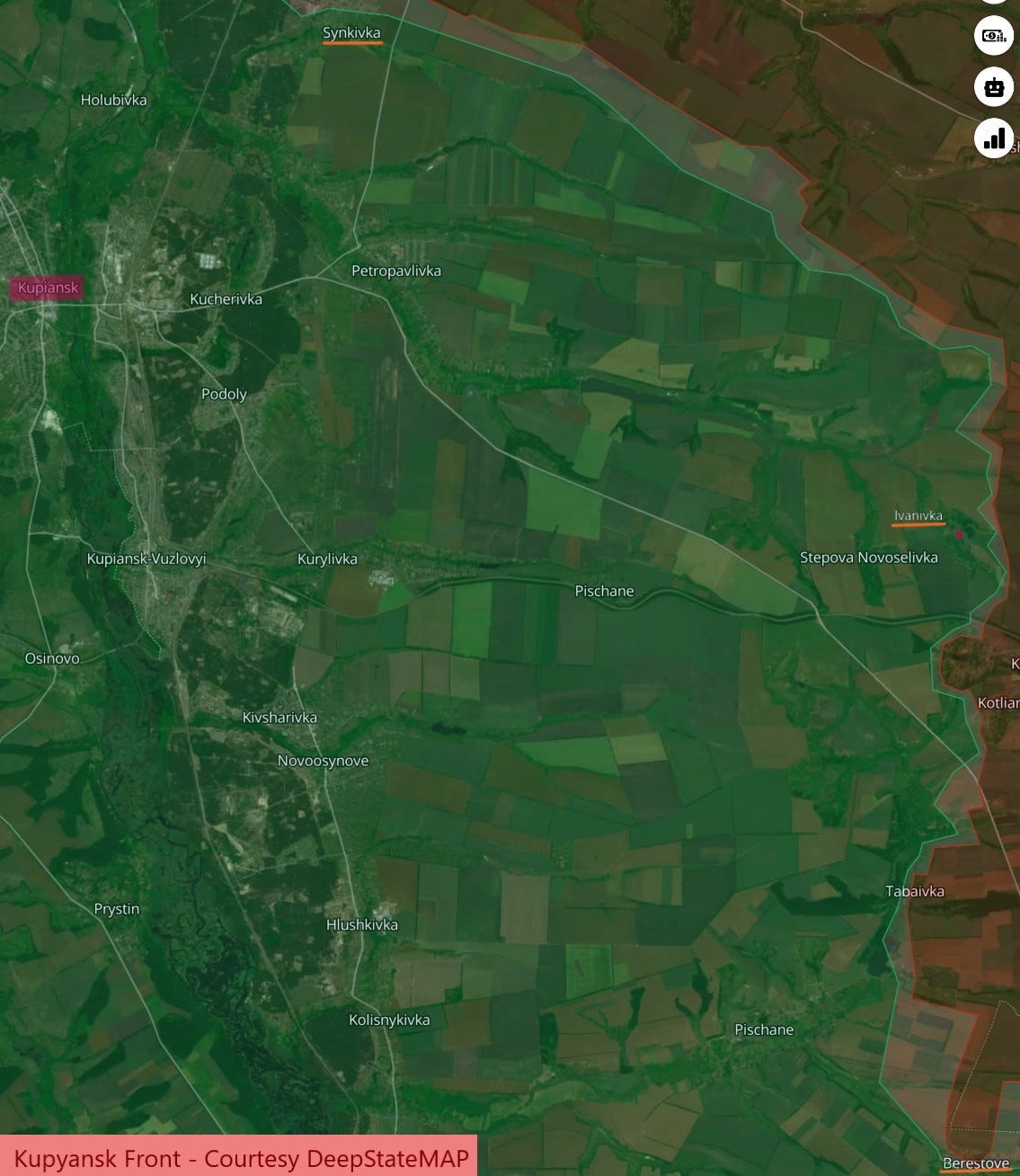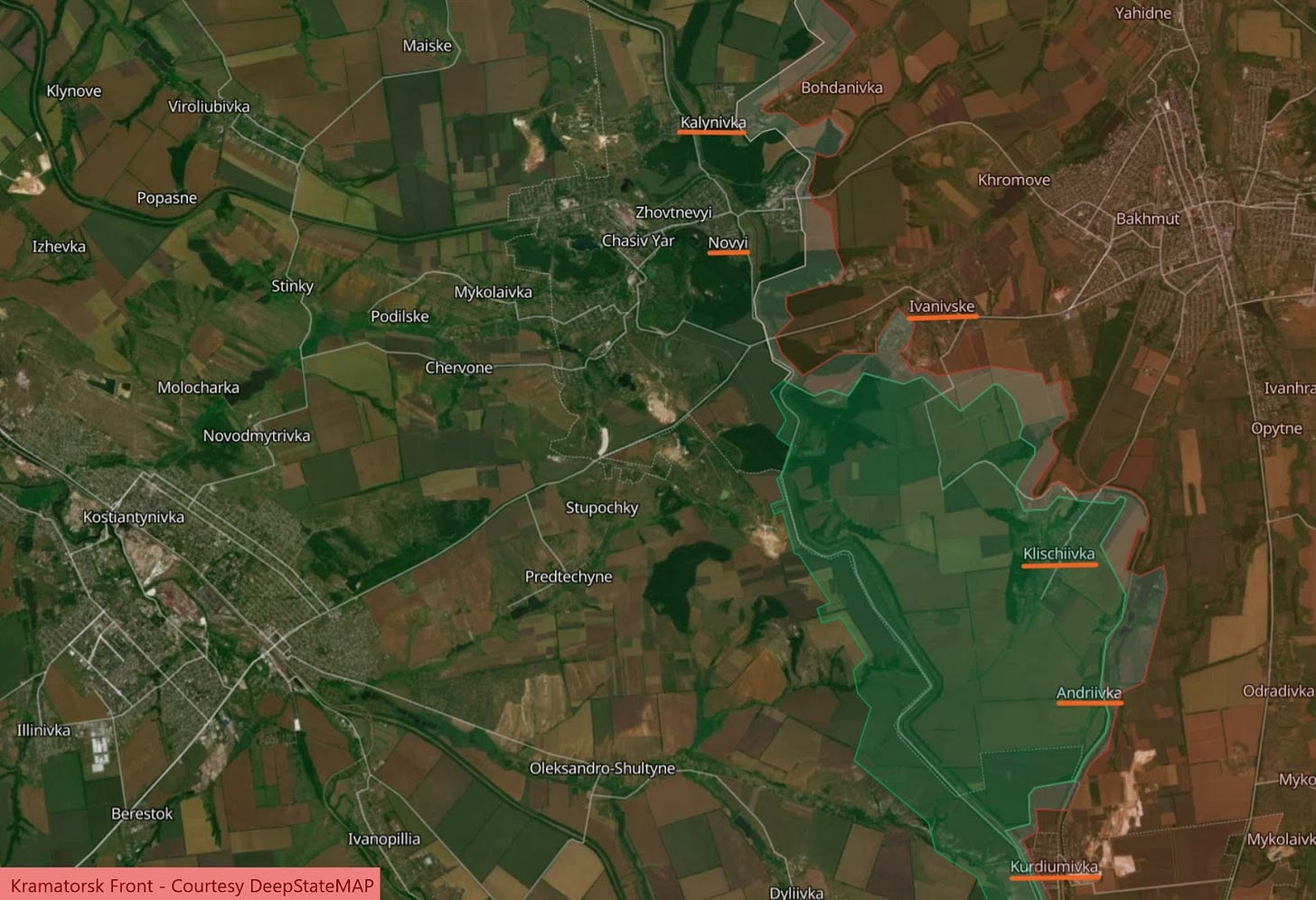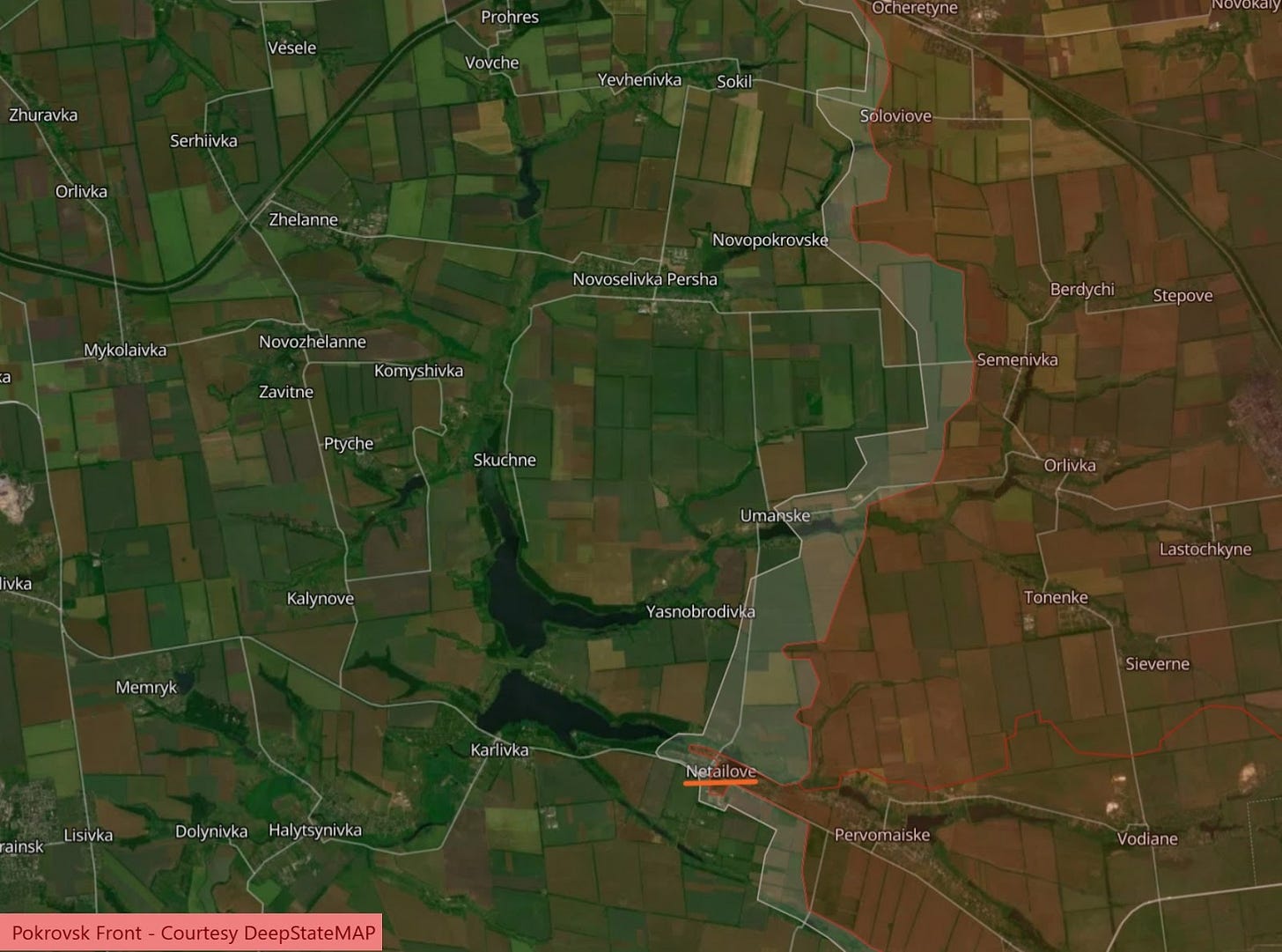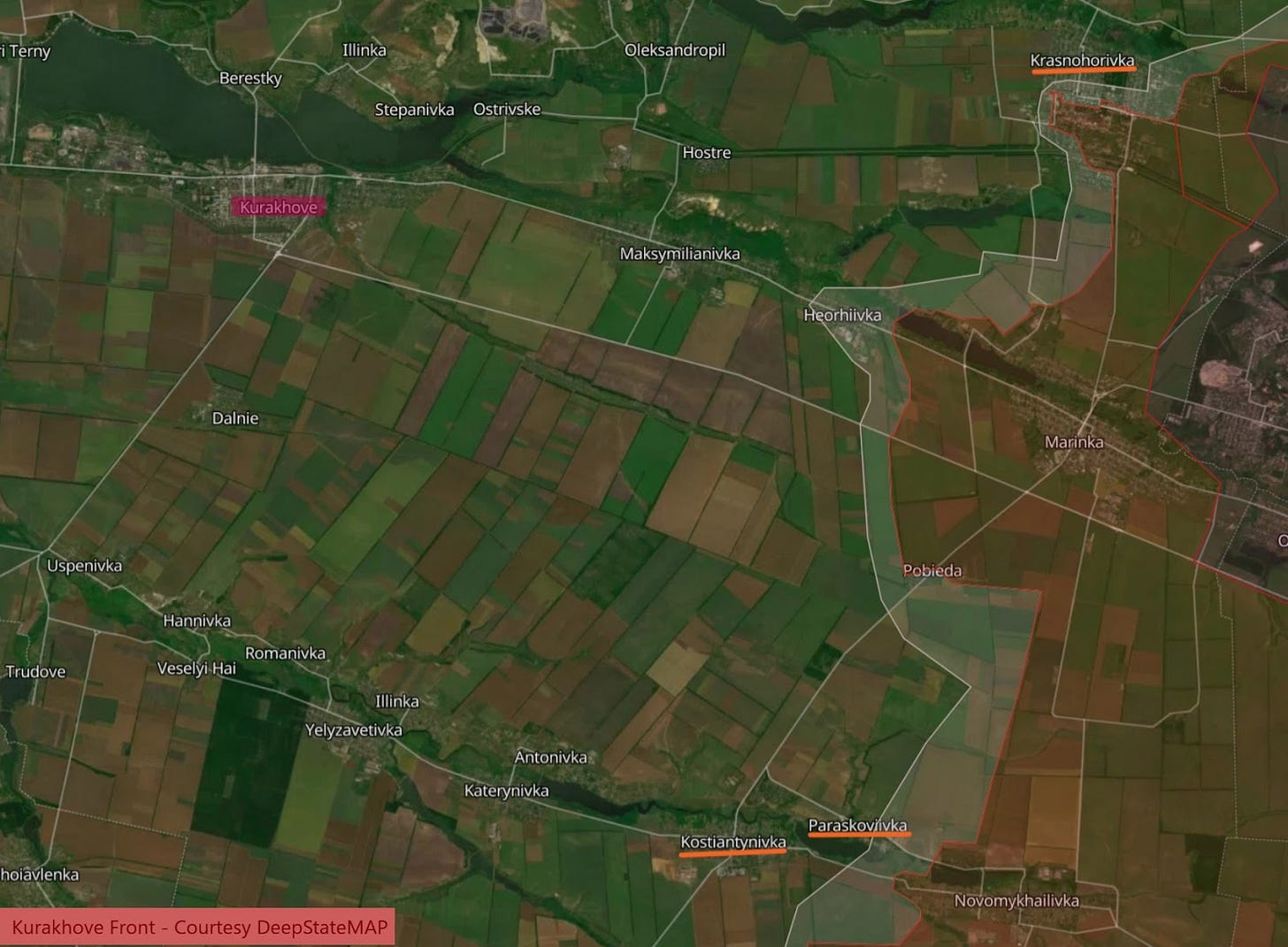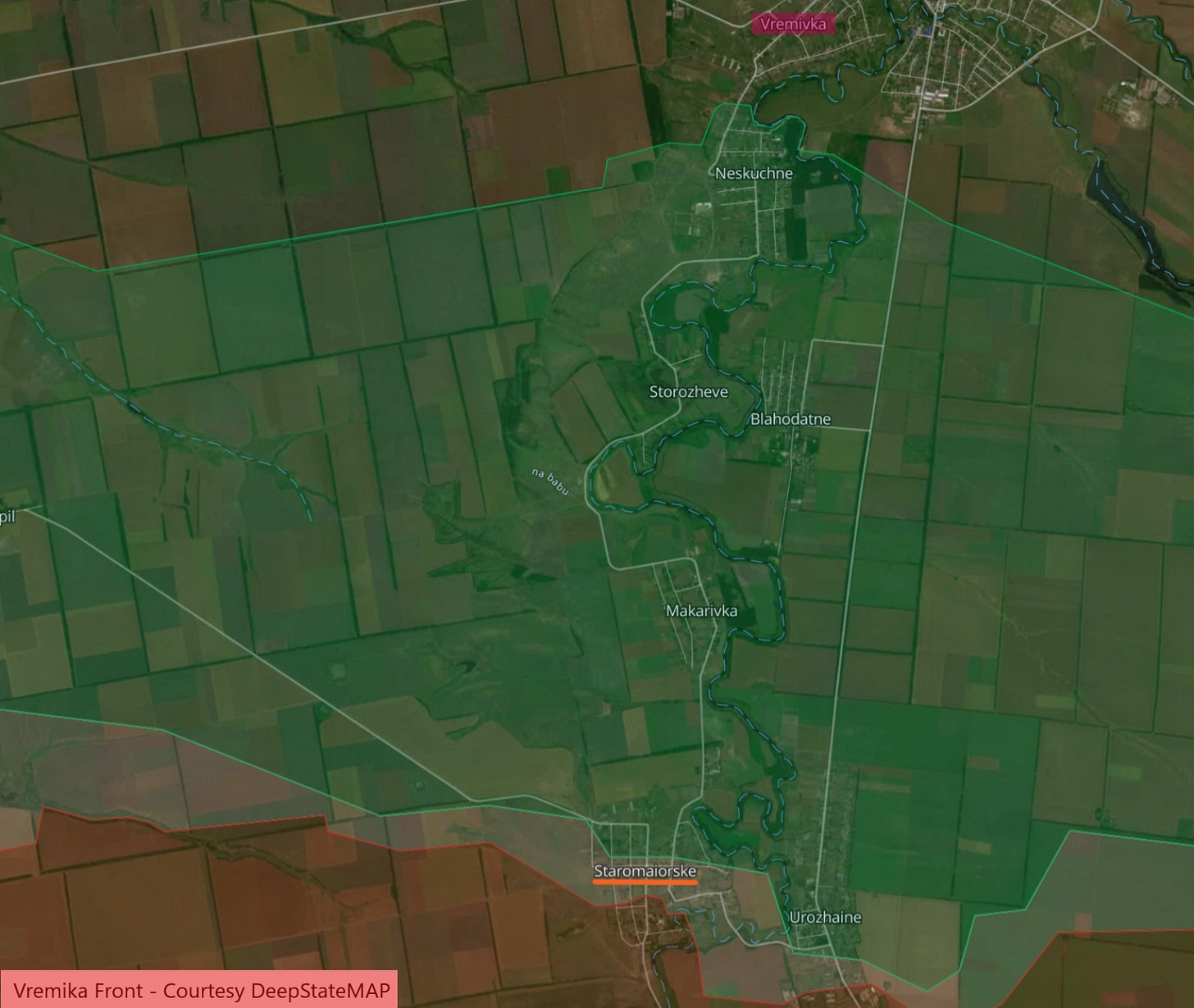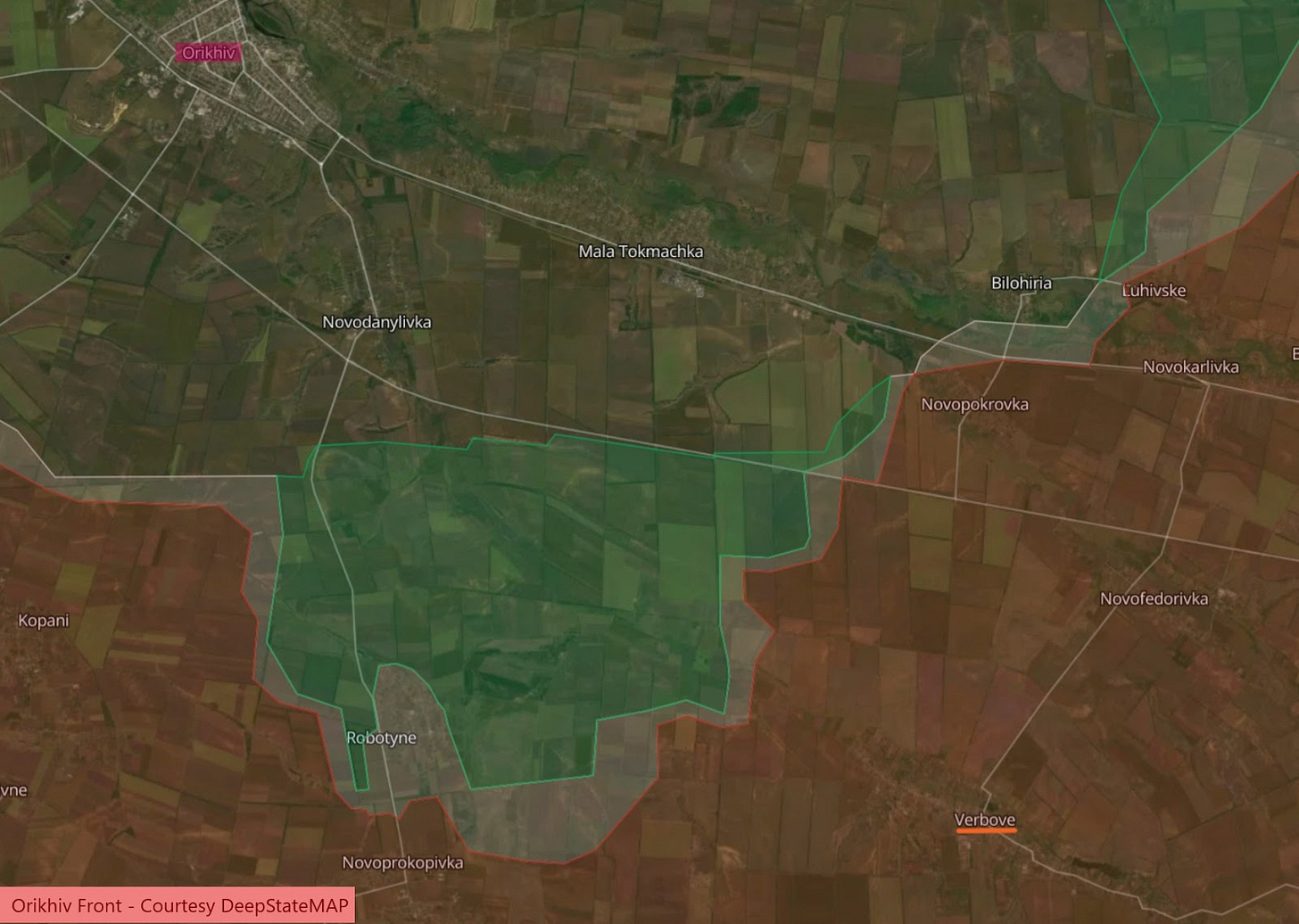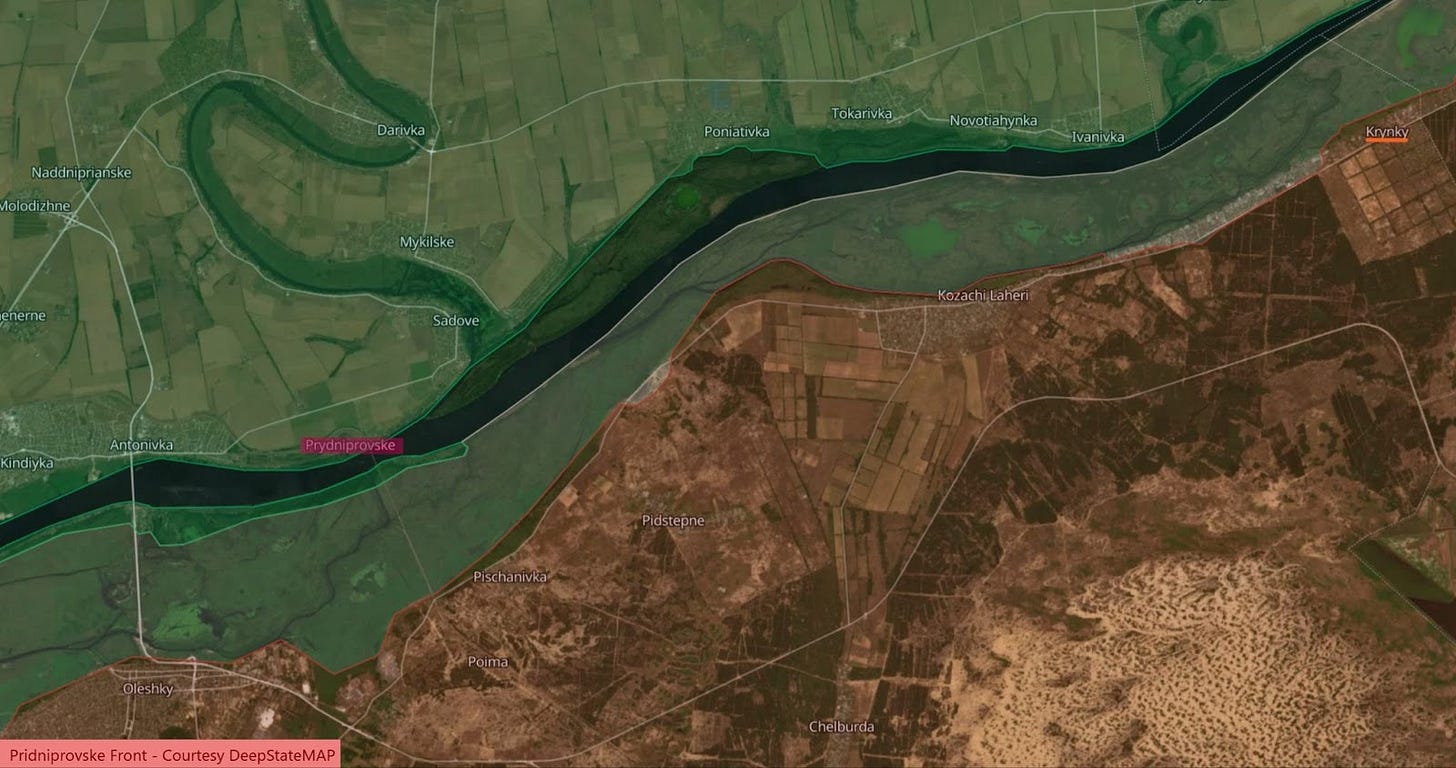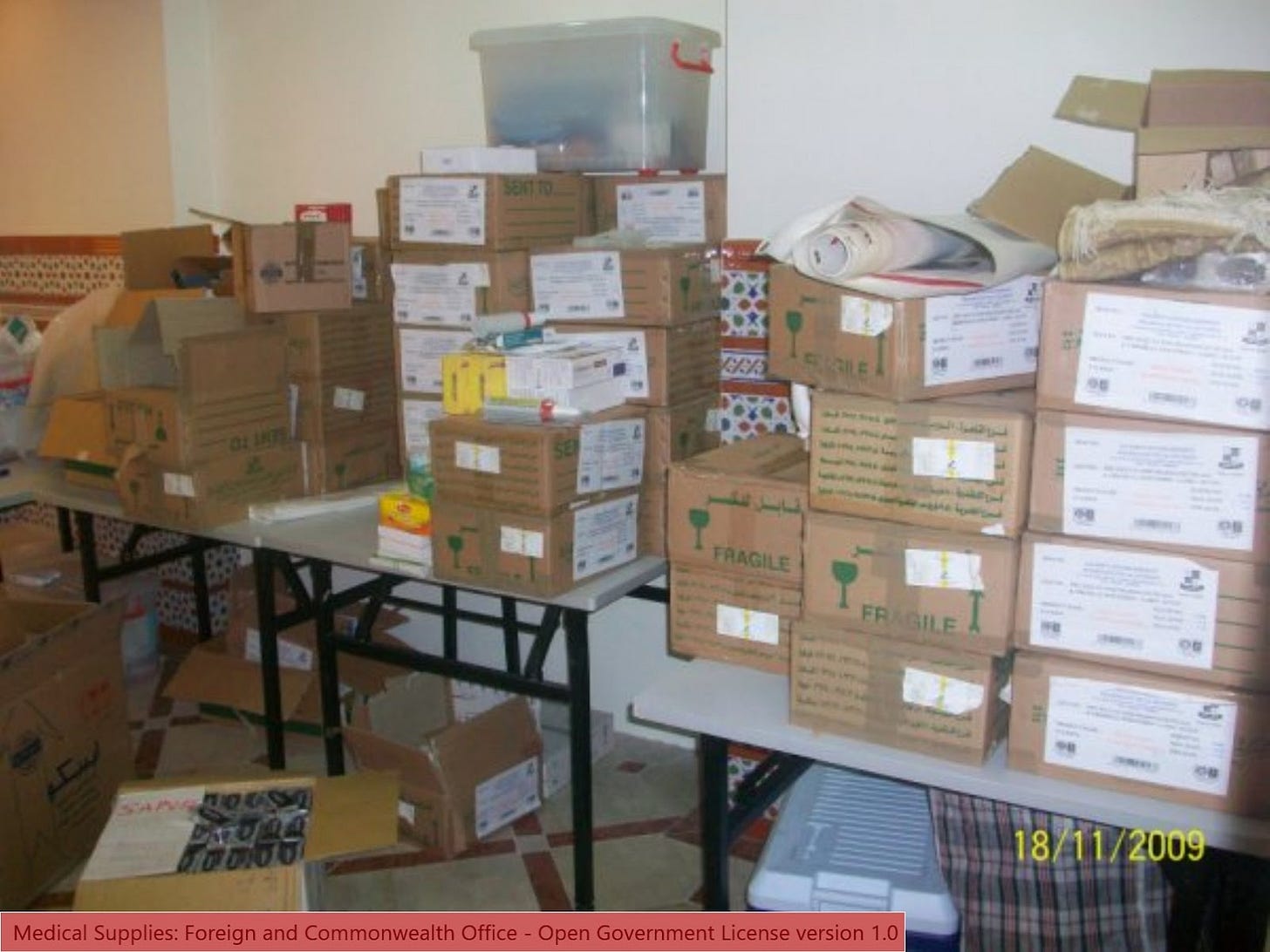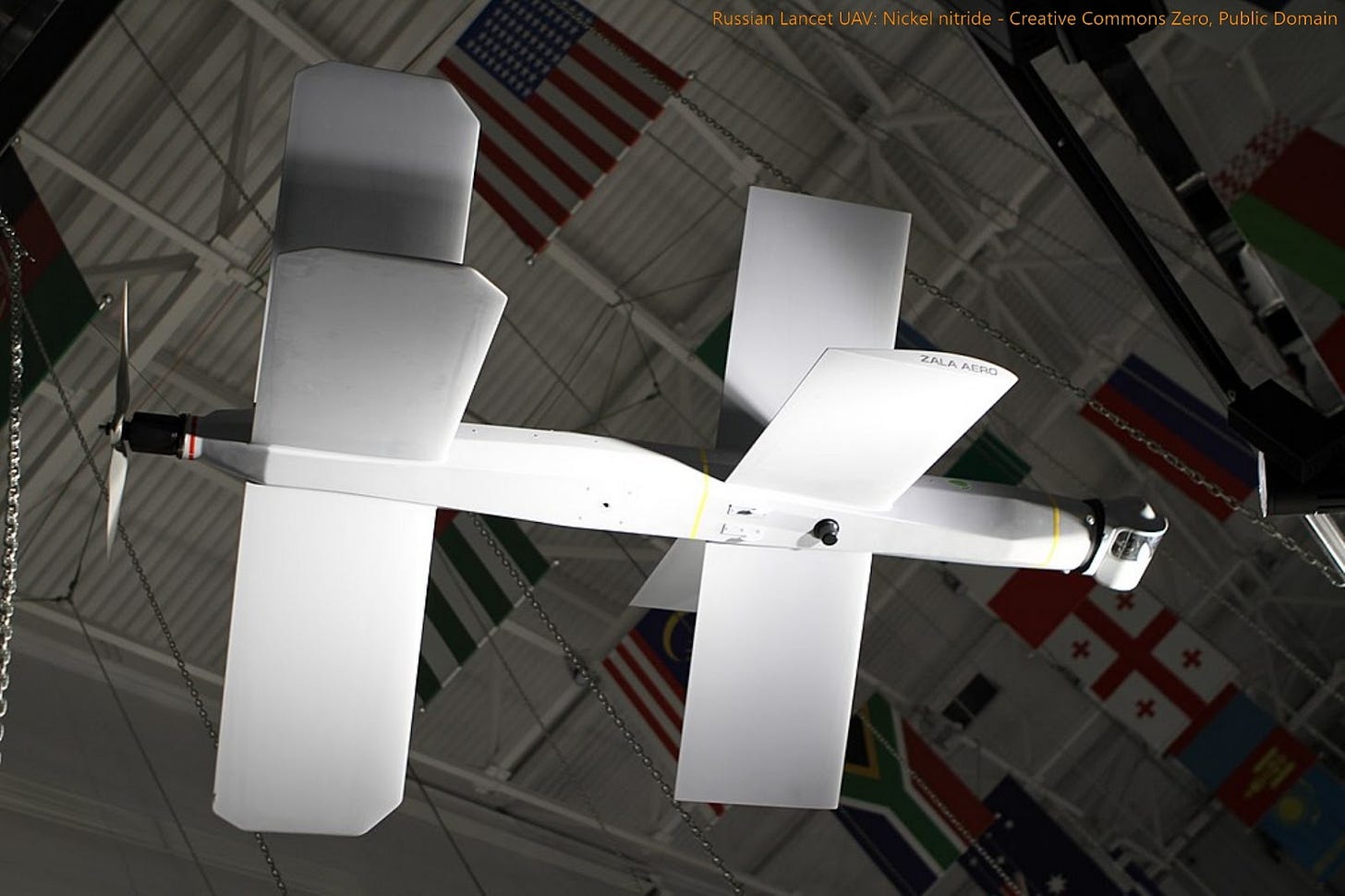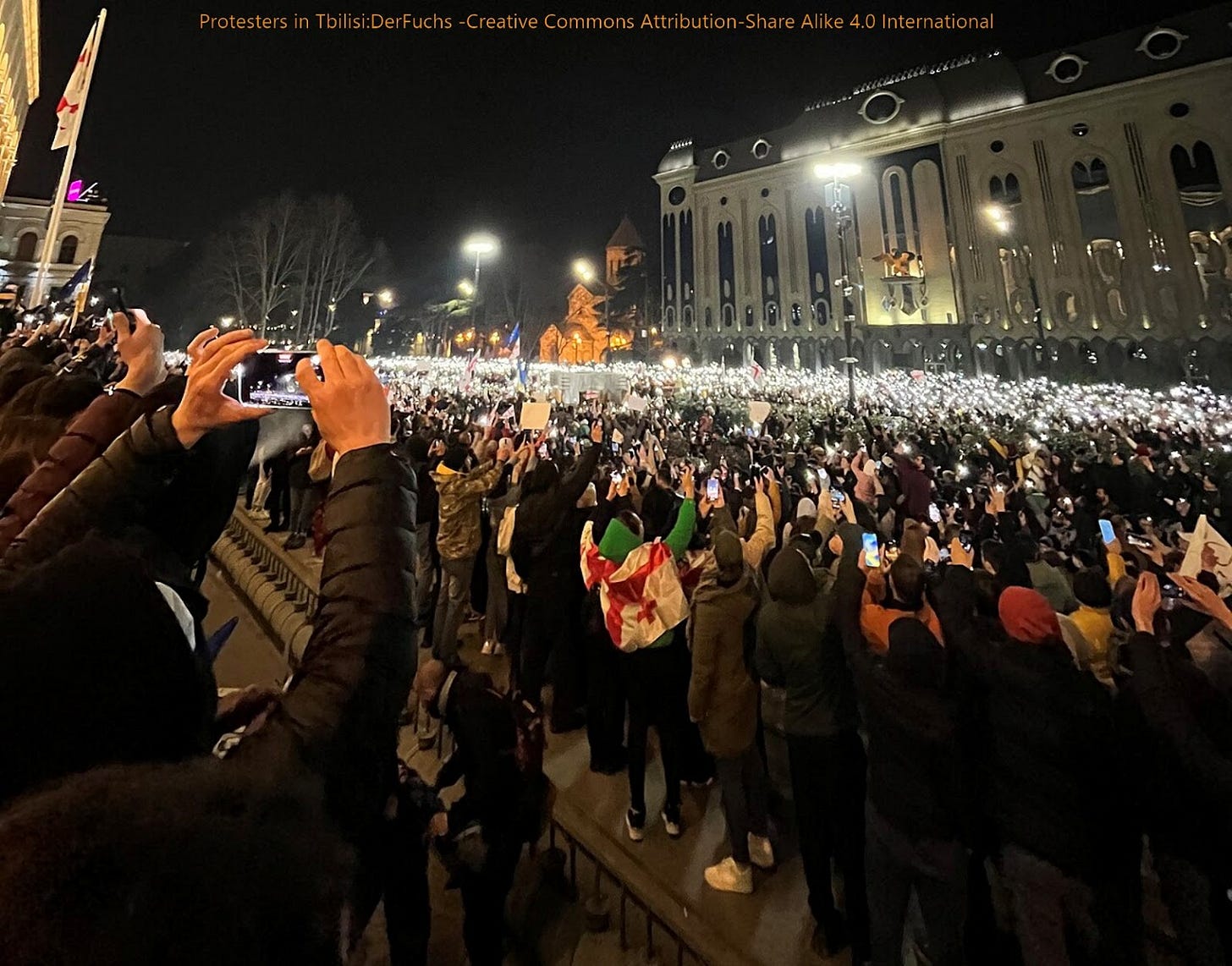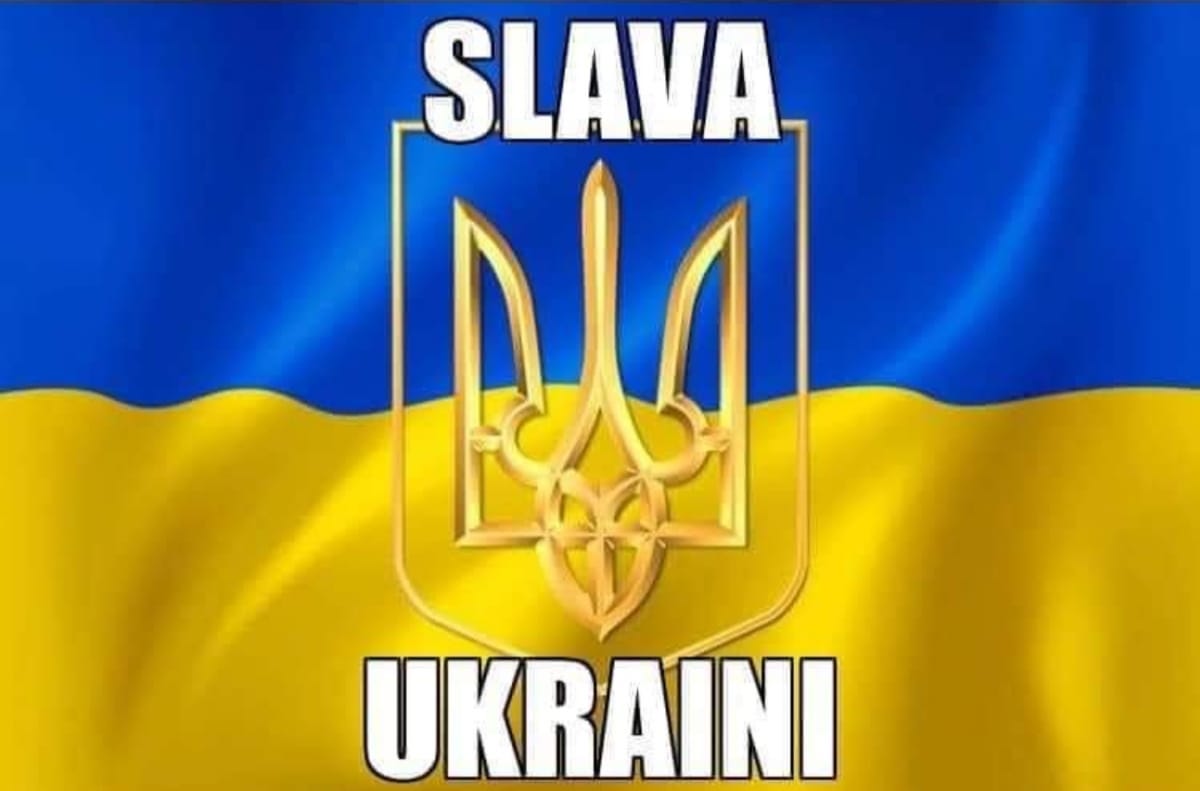Slava Ukraini! In early 2022 I began a Telegram channel aggregating news from a number of sources daily on the war in Ukraine. Since June 2023 I have provided a daily draft for the Ukraine War Brief Podcast collecting news from over 60 sources daily, much of which forms the basis of the script. While the Podcast is on hiatus I will make this Draft available here both on my own Substack and The People’s Media for those who wish to keep up with events on a daily basis.
ALONG THE CONTACT LINE
GSAFU Morning Report
The General Staff of the Armed Forces of Ukraine in its Operational Information update at 23:00 on May 18 stated that day 816 of the full-scale invasion of the Russian Federation against Ukraine was about to begin.
The situation at the front remains tense. Ukrainian defenders give a break to the pressure of Russian occupiers, strengthen our defense and under favorable conditions - counterattack.
During the past day, combat engagements took place. Over the past 24 hours, the enemy carried out missile strikes, air strikes, drone strikes and shellings across the positions of our troops.
At the same time, Ukrainian soldiers continue to inflict losses in manpower and equipment on the occupying troops, exhausting the enemy along the entire front line and continue to disrupt the plans of Russian occupiers to advance deep into the territory of Ukraine.
Air Force Daily Report
On the night of May 19, 2024, the Russian occupiers attacked Ukraine with 37 Shahed-131/136 attack drones from the Primorsko-Akhtarsk and Kursk regions - Russian Federation.
Anti-aircraft missile units of the Air Force, mobile fire groups of the Defense Forces of Ukraine and electronic warfare units were involved in repelling the enemy's air attack. As a result of anti-aircraft combat, all 37 "shaheds" were shot down in Kyiv, Odesa, Mykolaiv, Sumy, Vinnytsia, Zhytomyr, Cherkasy and Kherson regions.
The Khortytsia operational-strategic group
(Responsible for the northeastern part of Ukraine. )
Kharkiv axis: There were 12 combat clashes. Our soldiers repelled six attacks south of the settlements of Hlyboke and Lukyantsi of Kharkiv region. The enemy continues attempts to break through the defenses of Ukrainian units in the direction of the settlement Zelene, does not abandon attempts to capture Vovchansk. Russian occupiers use aviation for air strikes.
Defense forces are trying to push the enemy out in the direction of the settlement of Hlyboke and in the area of Vovchansk.
ISW: Russians likely prepare second phase of northern Kharkiv offensive
The US-based think tank Institute for the Study of War (ISW) in their May 18 Russian Offensive Campaign Assessment, stated that Russian forces are likely preparing for the second phase of their offensive operation in northern Kharkiv Oblast, which Russian forces likely intend to launch following their anticipated seizure of Vovchansk.
Ukrainian President Volodymyr Zelensky stated on May 18 that Russian forces advanced between five and 10 kilometers in northern Kharkiv Oblast before Ukrainian forces stopped Russian advances and that Russian forces are conducting the first of several waves of offensive operations in the area.
A second wave of tactical attacks is not the same as the second phase of the operation, and Russian forces may need to launch several "waves" of tactical attacks to achieve the objective of any given singular phase of their offensive operation in northern Kharkiv Oblast. Zelensky stated that the Russian military command seeks to attack Kharkiv City but that Russian forces lack the manpower required to seize such a large city, so Russian forces will slowly push towards Kharkiv City as part of efforts to force Ukrainian forces to withdraw from the area.
Available evidence indicates that Russian forces have so far only committed a limited amount of the prepared forces that Russia maintains in Belgorod, Kursk, and Bryansk oblasts for offensive operations in the area.
Ukrainian sources, however, have noted that the Russian forces so far committed to offensive operations in northern Kharkiv Oblast may already be degraded after suffering heavy losses and have also recently stated that Russian forces are "leasing" limited elements of Russian formations operating in the Svatove area as part of the Western Grouping of Forces but that other Russian forces groupings do not have "free" combat-ready forces or regiment- or brigade-level assets to transfer to the Northern Grouping of Forces to help sustain and intensify Russian offensive operations along the border. The Russian military command is likely not committing available reserves from the Northern Grouping of Forces to current offensive operations because it intends for these elements to support later phases of the offensive operations or subsequent waves of assaults.
Russian forces reportedly launched offensive operations in the international border area before they completed bringing the Northern Grouping of Forces up to its reported planned end strength and will likely continue offensive operations in the border area in waves as the Russian military attempts to reinforce the grouping. Ukrainian Main Military Intelligence Directorate (GUR) Deputy Chief Major General Vadym Skibitskyi recently reported that Russian forces have roughly 35,000 personnel deployed to the border area in Kursk, Bryansk, and Belgorod oblasts and that Russian forces intend to establish a grouping in the area that is between 50,000 to 75,000 personnel in size.
Russian forces are currently prioritizing the seizure of Vovchansk because it is likely one of the remaining tactical objectives of the first phase of offensive operations in northern Kharkiv Oblast. Russian forces conducted strikes on bridges across the Siverskyi Donets River to quickly isolate the battlefield east of the river in order to improve their chances to degrade Ukrainian ground lines of communication and quickly seize Vovchansk
Russian forces are reportedly conducting a larger number of glide bomb strikes on the settlement than elsewhere along the border and appear to have committed more manpower to the area than in the Lyptsi direction.
The Russian military command likely chose the seizure of Vovchansk as one of the key tactical objectives of the first phase of the offensive operation in northern Kharkiv Oblast, since Vovchansk is the largest settlement immediately on the border that would provide Russian forces a staging ground close to the Russian rear to prepare for and launch the second phase of the Russian offensive operation.
It is unclear if the second phase of the Russian offensive operation in northern Kharkiv Oblast will prioritize Russia's operational objective to expand the desired "buffer zone" further in width along the international border or Russia's operational objective to advance to within effective tube artillery range of Kharkiv City and its environs. Russian forces could also envision a subsequent phase of the offensive operation from Vovchansk that aims to advance towards Velykyi Burluk to threaten the operational rear of the Ukrainian force grouping defending in the Kupyansk direction.
Kupyansk axis: There were 11 combat engagements in this direction. Defense forces successfully repelled enemy attacks in the areas of the settlements of Synkivka, Ivanivka, Brestove.
Lyman axis: The enemy carried out 6 attacks in the directions of the settlements of Novosadove, Torske and Hryhorívka. There were no significant changes.
Siversk axis: Nothing to report.
Kramatorsk axis: The enemy 15 times tried to break through the defense of our troops. In the directions of the settlements Kalynivka, Klišchiyivka, Andriivka and Kurdiumivka did not succeed, suffered a loss and left. The fighting is ongoing in the areas of the settlements of Novyi and Ivanivske (Donetsk oblast). The situation is under control.
The Tavria operational-strategic group
(Responsible for the central-eastern and southeastern part of Ukraine.)
Pokrovsk axis:The Russian aggressor carried out 23 attacks. Fighting is ongoing. The enemy increased significant efforts from the influence of fire and assault in the area of the settlement of Netailove (Donetsk oblast). Defense forces are carrying out measures to stabilize the situation. The situation remains difficult.
Kurakhove axis: There were 11 combat engagements in the vicinity of Krasnogorivka, Konstantinivka and Paraskovíivka (Donetsk oblast)
Vremika axis: The enemy made 3 unsuccessful attempts to break through the defenses of our troops in the direction of Staromaiorske.
Orikhiv axis: Defense forces repelled the assault actions of the enemy northwest of Verbove. Losing positions is not allowed. The situation is under control.
The Odesa operational-strategic group
(Responsible for Kherson, Qırım, (also known as Crimea) and the Black Sea.)
Prydniprovsk axis: Ukrainian soldiers repelled 4 attacks of the enemy in the area of the settlement of Krynky Kherson region.
Ukraine destroys Russian Black Sea Fleet’s minesweeper Kovrovets
The Ukrainian Navy reported on Telegram that overnight Ukrainian Defense Forces destroyed the 266-M Kovrovets, a Russian Black Sea Fleet minesweeper.
“Last night, the Ukrainian Defense Forces destroyed the 266-M Kovrovets naval minesweeper of the Russian Black Sea Fleet. The Navy of the Armed Forces of Ukraine, together with their brothers-in-arms, continue to bring us closer to Victory,” the statement reads.
The Kovrovets (hull number 913) is a Project 266M Natya class minesweeper. It is designed for mine sweeping operations, including guiding ships through minefields, reconnaissance, control sweeping, and laying mines far from its bases. Prior to Russia’s full-scale invasion of Ukraine, the Kovrovets has participated in Russia’s military operations in Syria, conducting mine sweeping in Syrian waters.
The Natya class minesweepers, designated by NATO as Project 266M Akvamarin, are a series of Soviet minesweepers built in the 1970s and 1980s.
In March, the Ukrainian Navy reported that a third of the Russian warships in the Black Sea have been destroyed or disabled. With Ukraine’s Navy virtually non-existent, Ukraine employs missiles and the newly-created fleet of various maritime suicide drones to counter Russia’s dominance in the Black Sea. These tactics led to the destruction or severe damage to at least 17 vessels of Russia’s Black Sea Fleet, including the sinking of the Moskva, the Fleet’s flagship, early in the all-out war.
TEMPORARILY OCCUPIED TERRITORIES
Shortage of medicines in the temporarily occupied territories
Russia cannot adequately supply the occupied territories, where there is a lack of medicines in pharmacies and the available medicines are often ineffective. Most of the medicines are directed to the needs of the occupiers, leaving the local population without the necessary access to medical supplies Ukraine’s Center for National Resistance reported.
Russia is unable to ensure the proper functioning of the temporarily occupied territories, as well as its own. the Russian state functions chaotically and does not provide decent living conditions for its citizens. Because of this, pharmacies in the occupied territories lack the necessary medicines, and the available medicines are often useless and ineffective, which the locals call "chalk".
Most of the medicines delivered to these territories are aimed at the needs of the occupation forces and are kept in hospitals. The local population receives medicines only as a surplus, and villagers are often forced to travel to district centers to get medicines, without proper transportation.
THE HOME FRONT
Russian double tap attack on Kharkiv suburb kills five, injures 16
At about 11:00 and sometime later on 19 May, Russian forces shelled the Kharkiv district, with loud explosions heard by residents in Kharkiv, resulting in fatalities and injuries. The attack occurred during an air raid alert after a threat of ballistic missile strikes was announced in Ukraine’s east. Euromaidan reported.
Kharkiv Regional police later updated that the Russian attack targeted Cherkaska Lozova village, killing five and injured 16. Russians once again conducted the so-called double tap attack, with the second strike on the same location sometime later when the first responders have arrived:
“There are 16 injured, including an 8-year-old child (light injuries). 8 wounded are in serious condition. Among the injured are a police officer and an ambulance paramedic who came under repeated fire while providing assistance at the site of the hit,” the police reported.
Russian drone attacks Ukrainian power engineers in Donetsk Oblast
Ukrainian power engineers were attacked by a Russian Lancet drone while carrying out repairs at a power facility in Donetsk Oblast. There were no casualties. Ukraine’s Energy Ministry reports.
They stopped work and moved to a safe place.
RUSSIAN WORLD
Russia faces fuel shortage due to refinery strikes, is being helped by Belarus
Due to numerous Ukrainian attacks on Russian oil refineries and infrastructure, Belarus is increasing fuel supplies to Russia due to shortages caused by damage at these refineries.
According to local reports, Belarus’ oil refining sector has seen a surge in the production of aviation jet fuel and its delivery to Russia by rail. Ukraine’s Center for National Resistance reported on Telegram.
Members of the Wagner group and the security battalion of the Ministry of Internal Affairs of Belarus are responsible for organizing the protection of transportation on the territory of Belarus.
”Russia without fuel is a perfect illustration of Putin’s rule. However, Lukashenka’s regime is not able to cover the deficit and is only a method of patching holes. (…), his assistance is evidence of the self-proclaimed dictator’s aggression against our country and the occupied republic’s participation in the war against Ukraine”, the center reported.
NEWS WORLDWIDE
Georgia president vetoes 'foreign agent' law
Georgia's president has vetoed a divisive "foreign agent" law that has sparked weeks of mass street protests. BBC reports.
On Tuesday MPs passed the controversial law which requires NGOs and independent media that receive more than 20% of their funding from foreign donors to register as organisations "bearing the interests of a foreign power".
Salome Zourabichvili said the law "in its essence and spirit, is fundamentally Russian" and an obstacle to Georgia's path to EU membership.
However, her veto is only symbolic as the prime minister's Georgian Dream party has enough members in parliament to override it by holding another vote.
In a televised address broadcast on Saturday, the president said her veto was "legally justified".
"This law cannot be a subject to any change, improvement and embellishment, and thus it’s a very simple veto. This law must be withdrawn, " she said.
Critics say the law is inspired by authoritarian legislation neighbouring Russia uses to crush dissent.
Georgia was granted EU candidate status in December 2023, and some are concerned that the law will derail the country's path to EU membership.
Conditions for membership involve candidate countries implementing anti-corruption reforms, increasing government transparency, and promoting civil society.
Estonian Prime Minister names reason why Ukraine is not supported enough: Fear
Estonian Prime Minister Kaja Kallas believes that sufficient support for Ukraine from the free world is hindered by fear.
She said this on Saturday at a Lennart Meri conference discussion on supporting Ukraine. Kallas was asked during the discussion, what prevents the free world from supporting Ukraine sufficiently? ERR reported.
“What holds us back in supporting Ukraine is fear. Countries have different fears, whether it’s nuclear fear, whether it’s fear of escalation, whether it’s fear of migration. We must not fall into the fear trap because that is exactly what Putin wants. He wants us to be afraid and not support Ukraine because of fear,” Kallas said.
“We will act decisively and will not allow our adversaries to dictate our future,” the Prime Minister added.
Kallas also emphasized that Ukraine should be supported for as long as necessary.
“This means we must help Ukraine push Russia back to its borders. We must continue to apply sanctions until Ukraine’s territorial integrity is restored.”
MILITARY & TECH
Patria ready to restart 155mm artillery production
In response to the evolving dynamics of modern warfare, Finnish defense company Patria has announced its readiness to resume the production of 155mm field artillery systems. Defense Express reports.
The decision comes amid increased recognition of traditional artillery’s crucial role in contemporary conflicts, exemplified by the ongoing war in Ukraine.
Patria, renowned for its longstanding expertise in gun production and development, plans to leverage its historical knowledge to meet current and future defense needs. The company’s 155mm field cannon, the 155 K98, has been a cornerstone of the Finnish Defence Forces since its introduction in 1998. This artillery system, developed over decades of innovation by Patria and its predecessors Tampella and Vammas, features a barrel length of approximately eight meters and a range of 40 kilometers.
The 155 K98 has undergone several enhancements, including an increase in barrel diameter and lengthening to extend its range. Since its establishment, Patria has delivered nearly 200 of these field guns to the Finnish Defence Forces, with the last units handed over in 2005. Despite the cessation of production, Patria has continued to maintain and upgrade these guns, ensuring their operational readiness through partnerships such as the one with Millog.
That’s it for today’s Draft folks if you would like to keep up with events in Ukraine daily please consider subscribing, its free!
Feel free to share this update with your friends. Heroyam Slava!






